About
Memorial Trees and Historic Remains
The ginkgo where sperm was discovered
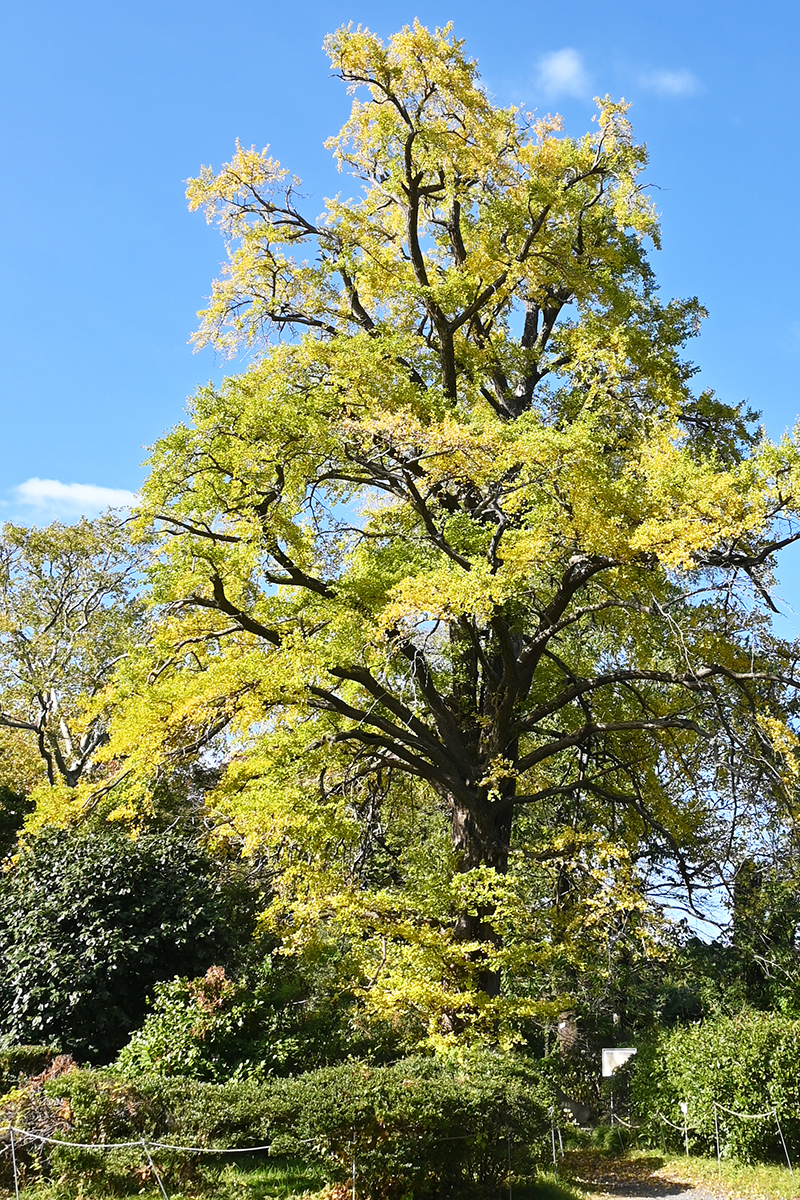
In 1896, Sakugoro Hirase, an assistant professor in the Botany Department of the Faculty of Science, discovered the existence of sperm in seed plants by using the female ginkgo in the center of the garden as research material. This was a world-class discovery by an early Japanese biologist and is considered a major achievement in the history of biology. In 1956, a monument was erected under the tree to commemorate the 60th anniversary of the discovery of sperm.
The tree is estimated to be about 300 years old, with a trunk circumference of 4.9 meters. It is estimated that the ginkgo was probably planted by Okada Rizaemon, an administrator of Oyakuen, because the area where the ginkgo grows was the residence of Okada Rizaemon, and Rizaemon became an administrator in 1718. In June of the first year of the Meiji period (1868), when the Oyakuen was transferred from the Shogunate to the Tokyo Prefecture, most of the trees in the garden were cut down, because if they were cut down before the designated date, they would become the property of those concerned. At that time, this large ginkgo tree was also sawed, but because it was too thick, it could not be cut down before the date, and it escaped being cut down. At the beginning of the Showa period (1926–1989), the saw marks could still be seen and it was called "saw-toothed ginkgo," but now the marks have completely disappeared and the name has been forgotten.
Newton's apple tree

It is a famous anecdote that physicist Sir Isaac Newton (1643–1727) discovered the "law of universal gravitation" by watching an apple fall from a tree. The tree that stood in Newton's birthplace has been grafted and distributed to science-related institutions around the world. The tree in the Botanical Garden was grafted in 1964 from a branch given by Dr. Sutherland, Director of the Institute of Physics in England, to Dr. Yuji Shibata, Director of the Japan Academy. The branch was infected with a virus, so it was grown in isolation at the Botanical Garden and treated for the virus before being planted in the Garden in 1981. Since then, grafts have been distributed from the Garden to research institutes, botanical gardens, schools, and other institutions in Japan, where they have become popularly known as "memorial trees that nurture a scientific mind.”
Mendel's grapevine
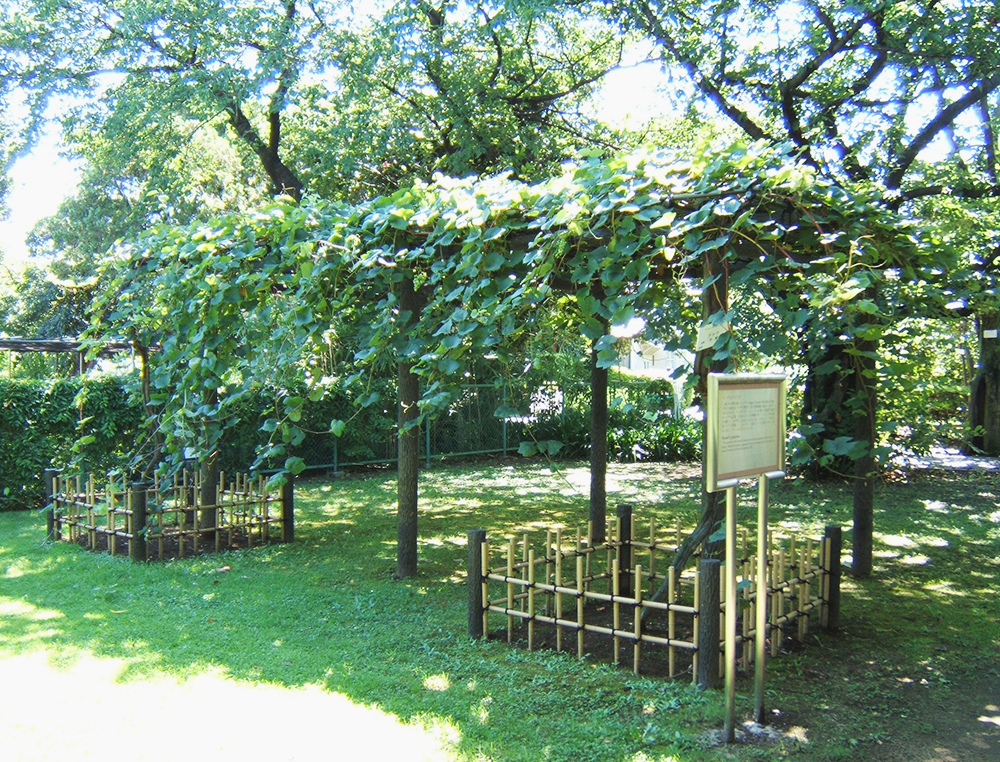
Mendel's grapevine is a historic branch of the grape used for the experiments of Gregor J. Mendel (1822–1884), who laid the foundations of genetics. In 1913, when Prof. Manabu Miyoshi, the second director of the Botanical Garden, visited the monastery in Brno, Czech Republic, where Mendel worked, he asked for a share of the remaining grapes in the former experimental garden, and the following year the grapes were sent from the monastery. It was then discovered that the grape at the monastery in Brno had disappeared, so the grape from the Garden was sent back home and the same grape was restored there.
Japanese Garden

The garden is derived from the garden of Hakusan Goten, the childhood residence of the fifth shogun, Tokugawa Tsunayoshi, and was part of the residence of Ninagawa Notomori at the end of the Edo period. Although the name of the gardener is unknown, the garden is said to be one of the most representative gardens of the Edo period with its skillful use of the natural terrain and its gentle masonry and ground layout. In one corner of the garden is the ume (Japanese plum) orchard, which has a collection of about 100 plants of about 50 varieties of ume, mainly for ornamental purposes. In the center of the ume grove is a Japanese iris garden with a total of 100 varieties of Japanese iris, 80 of the Edo variety and 20 of the Ise variety.
Main building of the former Tokyo Medical College
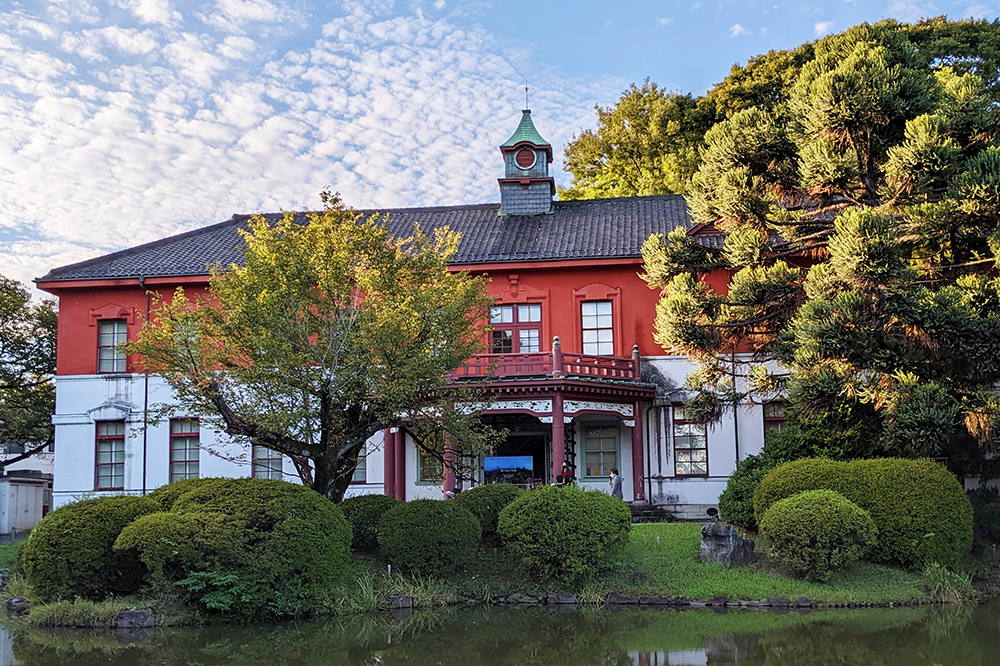
In a corner of the Japanese Garden is the main building of the former Tokyo Medical College, which has been designated as an Important Cultural Property. It is the oldest existing building associated with The University of Tokyo and was constructed in 1876. It was moved from the Hongo campus to this location in 1969. It is currently used as the Koishikawa Annex of the University Museum.
Well of the former Koishikawa Sanatorium
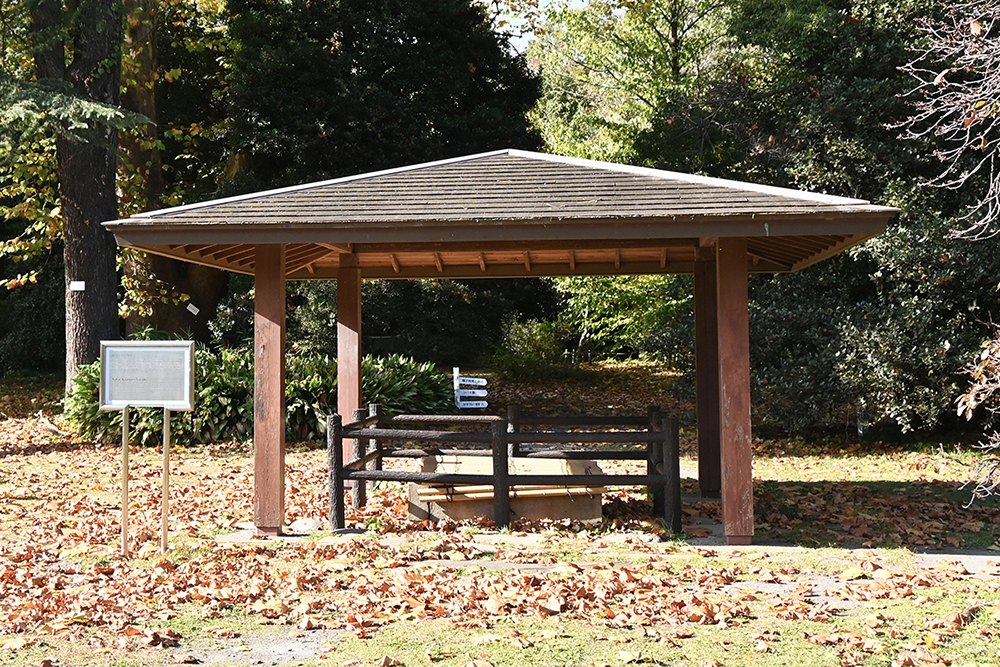
Koishikawa Sanatorium was a treatment center for the poor that was established in January 1723 based on the opinion of Ogawa Shosen, a town doctor, and continued until it was abolished at the time of the Meiji Restoration. The well of this sanatorium still exists today, and the quality and abundance of the water was of great use as drinking water for evacuees during the Great Kanto Earthquake of 1923.
Experimental breeding of sweet potatoes

Aoki Konyo thought that if sweet potatoes could be grown in the Edo area, they would be very profitable and useful as a food crop in times of famine, so in 1735 he asked for and received permission from the Shogunate to try growing them here. The experiment was a success and eventually led to the nationwide cultivation of sweet potatoes. A monument was erected in 1921 to commemorate this achievement.
Shibata Memorial Hall
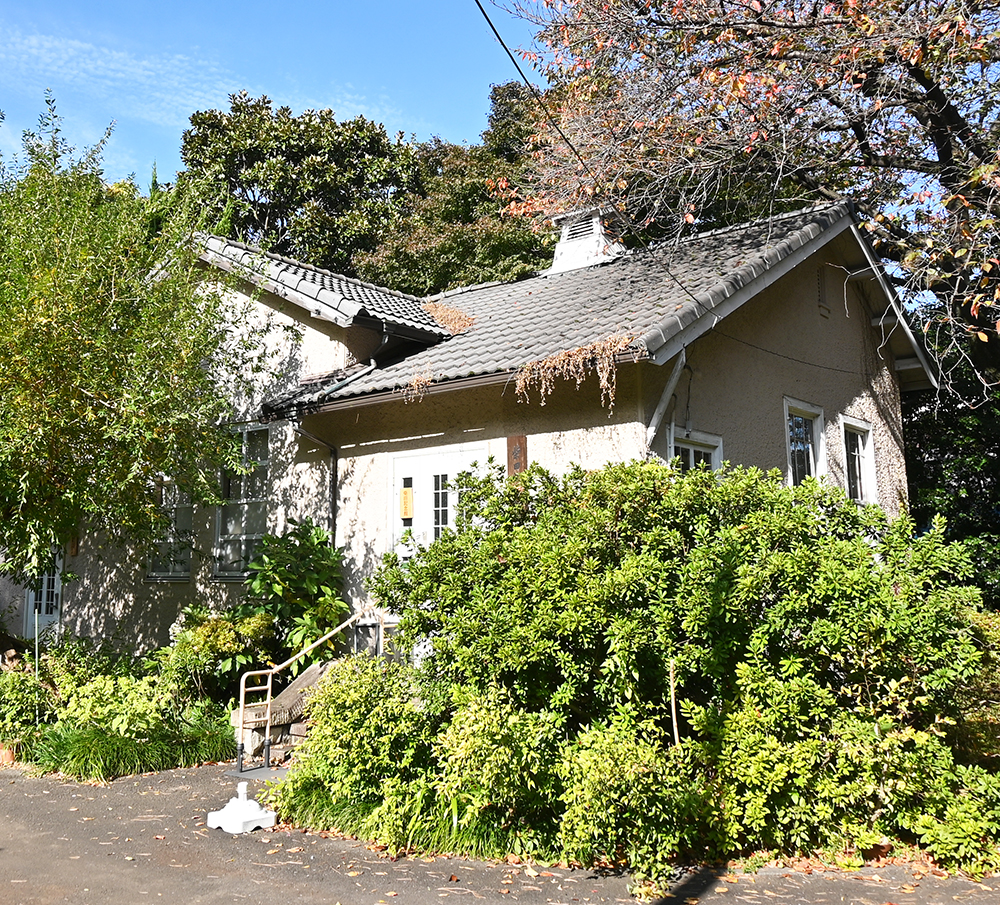
Shibata Memorial Hall was built in 1919 as the Laboratory of Physiological Chemistry by Keita Shibata, a professor in the Botany Department of the Faculty of Science, who received an Imperial Prize from the Imperial Academy in 1918 for "Studies on the Distribution of Flavone Compounds in the Plant Kingdom and Their Physiological Significance". Shibata also conducted his research in this building. There is a memorial to the left of the building.
Ruins of Kanyakujo (area for drying medicinal herbs)
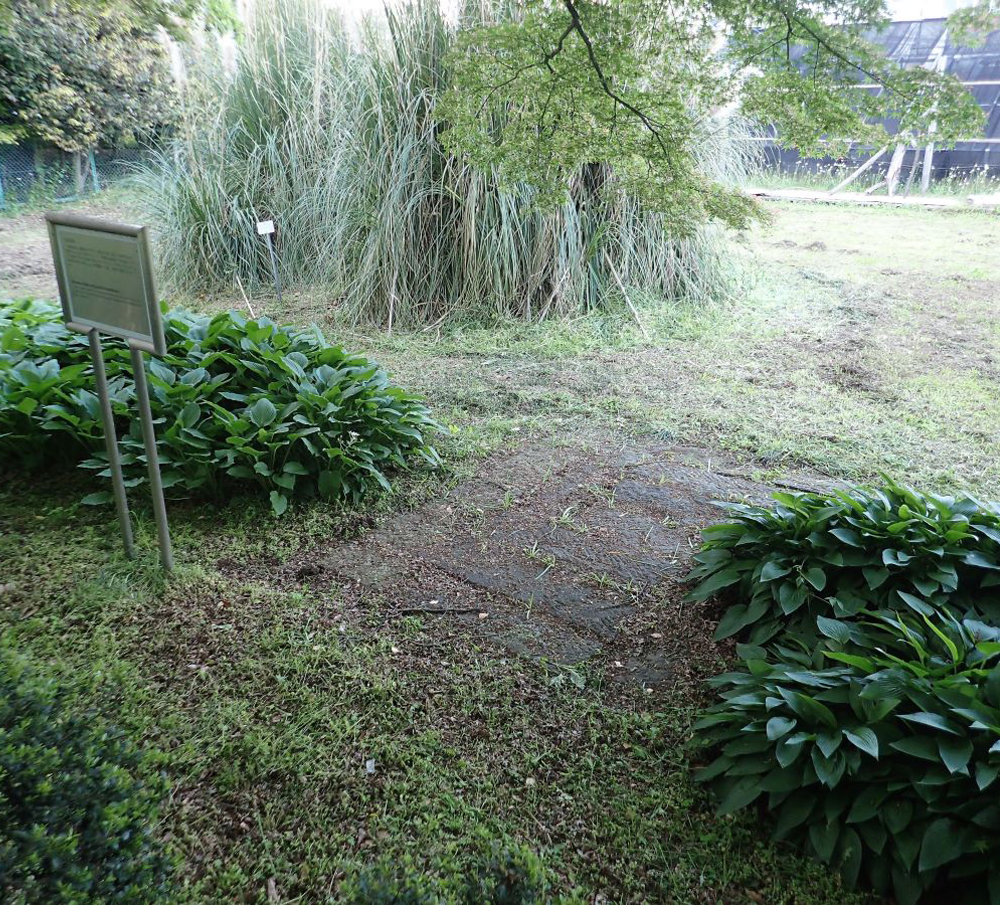
Pieces of flat stones used in the area to dry medicinal herbs to be presented to the Shogunate remain in the same position as they were at the time of Oyakuen. These flat stones were called “Ishidatami” and were used to dry medicinal herbs. The drying area was about 132 m², and women were not allowed to enter, and the area was strictly surrounded by bamboo palisades.
Monument to the Great Earthquake

After the Great Kanto Earthquake of 1923, many of the victims were evacuated to the Botanical Garden, and some were housed in 22 emergency shelters set up in the Garden by the Ministry of Home Affairs. Although all the evacuees left in January 1925, the Great Earthquake and Fire Memorial Stone was left behind to commemorate the evacuation.










